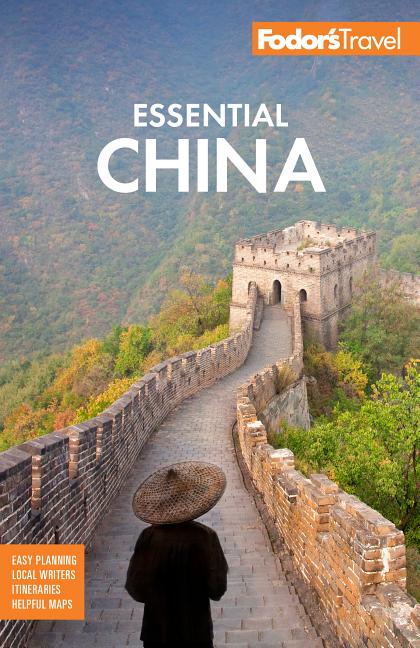Southern China: Cities and Mountains
Hong Kong, Macau, Guangxi, Yunnan, and Sichuan, 15–18 days
With its lush geography, karst limestone peaks, and rich cultures, a visit to southern China offers opportunities to witness the country's incredible natural and ethnic diversity. Begin your trip in fast-paced Hong Kong before heading farther south to the gorgeous backcountry of Guangxi, Guizhou, and Yunnan.
Day 1: Hong Kong
Despite the city's return to Chinese rule in 1997, Hong Kong still feels a world away from the mainland. Get settled in at the Lan Kwai Fong Hotel with its amazing harbor views. When you're rested, take a ride on the Star Ferry connecting Hong Kong Island with Kowloon. Try dim sum at the legendary Tim Ho Wan in Kowloon—the coconut cream buns and shrimp dumplings are superb. Back on Hong Kong Island, don't miss the smoke-filled Man Mo Temple and Hong Kong's famous assortment of antiques shops and art galleries. Ride the very steep tram to the summit of Victoria Peak, with views of the entire harbor.
Day 2: Get out of the City
(30 minutes by express ferry to Lantau)
While the business districts clustered around the harbor feature some of the world's densest urban jungle, Hong Kong also has a relaxed natural side. Lantau Island is a favorite of visitors for its beaches and hiking trails. Board the ferry at the Outlying Islands Ferry Pier on Hong Kong Island. Arriving at the town of Mui Wo, you can catch a bus to the island's top two attractions: Po Lin Monastery, featuring the world's tallest outdoor bronze statue of Buddha, and Tai O, an old fishing village dotted with terrific seafood restaurants. For even greater solitude, take the ferry to one of the smaller Outer Islands.
Day 3: Macau
(1 hour by TurboJet from Hong Kong)
Even with a recent push to become Asia's Las Vegas, Macau is still decidedly quieter and more traditional than Hong Kong. The slower pace of development has left much of the city's colonial charm intact. Start with a visit to Largo do Senado (Senate Square), paved with Portuguese-style tiles and surrounded by brightly colored colonial buildings. The city is home to two beautiful churches, São Domingos and São Paulo, the latter featuring exhibits on the early history of Asian Christianity. If you plan to stay overnight, the Altira Macau has breathtaking ocean views. For flavorful Macanese dishes like steamed crab and clams stewed in beer, A Lorcha restaurant is highly recommended.
Days 4–8: Yangshuo and Longsheng
(1½-hour flight from Hong Kong to Guilin; 90-minute bus ride or 4-hour boat ride from Guilin to Yangshuo; 3 hours by bus from Guilin to Longsheng)
The scenery in northern Guangxi is some of the most beautiful in all of China. Enchanted by dramatic groupings of sheer limestone karst mountains, visitors often find themselves loath to leave. To get to Yangshuo, you’ll first head to Guilin, where you'll have a choice of taking the bus or the more scenic four-hour Li River Cruise. Once in Yangshuo, the Giggling Tree is an excellent base for exploring natural sites like Green Lotus Peak and Moon Hill. For meals, join the backpackers at Kelly's Place for beer and dumplings. Head back through Guilin to the town of Longsheng, home to the famously photogenic Dragon's Backbone Rice Terraces before returning to Guilin.
Days 9–14: Northwest Yunnan
(2- to 2½-hour flight from Guilin to Dali or Lijiang with connection in Kunming)
Sandwiched between the Tibetan Plateau and Myanmar, this area has long attracted foreigners with its mix of minority cultures and stunning natural beauty. Dali, beside the waters of Erhai Lake, is home to the Bai people, who settled here 4,000 years ago; the elegant Three Pagodas north of town is one of China's most iconic images. For a unique experience, book a room at the Yunnan Inn, owned by Chinese artist Fang Lijun. Pancakes and decent coffee at Café de Jack will fill you up before heading out to explore Dali's scenic Old Town. A three-hour bus ride north of Dali lies Lijiang, home of the Naxi people. The East River Hotel offers a tranquil location and is close to Mishi for grilled yak meat and beer. The highlight of the region is Tiger Leaping Gorge, one of the deepest river gorges in the world and a popular two-day hike.
Day 15–18: Chengdu
(1½-hour flight from Dali to Chengdu)
As the capital of Sichuan Province, Chengdu has long been one of China's great cultural centers. Famous for its spicy cuisine, the city also manages to maintain a pleasant atmosphere of yesteryear. Stay at the elegant Minshan Fandian in the center of town near People's Park. A quick taxi ride away is the remarkable Buddhist Wenshu Monastery, known for its peaceful tea gardens. For animal lovers, take a bus 45 minutes out of town to the Giant Panda Breeding Research Base. If you crave authentic Sichuan hotpot, Shijing Shenghuo brings the fire. No matter how little time you have available, make the three-hour bus trip south to Leshan to see the world's largest stone-carved Buddha. With toes the size of a small bus, the seated Grand Buddha is impressive, to say the least.




